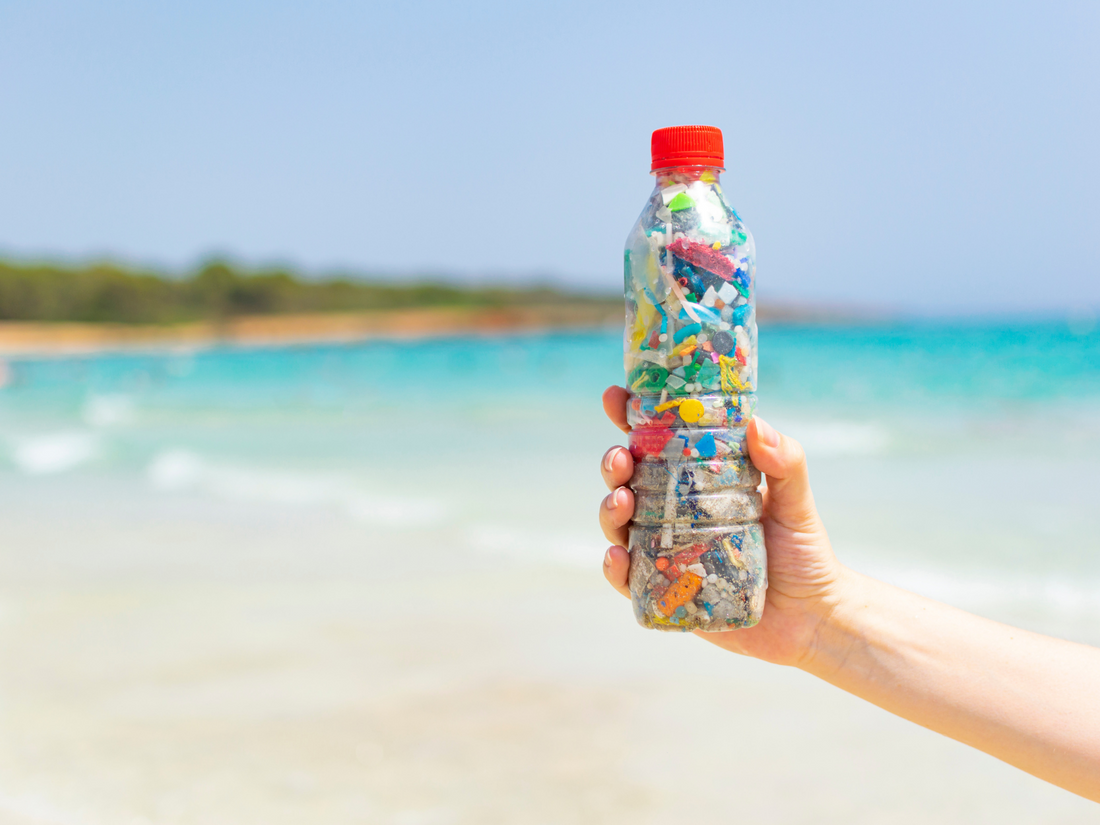We are sure you will have seen microplastics popping up in the news and on social media recently, and if not, have you been living under a rock??
So, what are microplastics, and why is everyone talking about them?
Microplastics are small pieces of plastic that measure less than 5 millimetres in size. They may be extremely tiny in size but are getting researched more and more for their potential threat to the environment, particularly the ocean and aquatic life.
There are two types of microplastics:
-
Primary microplastics have been made small intentionally for commercial use, such as for microbeads in face and body scrubs, microfibres in clothing, and other textiles such as fish nets.
-
Secondary microplastics are particles that have formed from the breakdown of larger plastics such as water bottles, plastic bags, and plastic straws.
The stinky truth is that microplastics are very prominent in the cosmetics industry; 9 out of every 10 cosmetic products contain them. Often, cosmetics and personal care brands will use plastics as their main ingredients as a bulking agent for their products. Luckily, this isn’t the case on the Wild side!
So, what's the issue with microplastics?
Unfortunately, like plastics of any size, microplastics are very resistant to biodegradation and can take hundreds to thousands of years to decompose. This is an issue because microplastics are managing to worm their way into every corner of the Earth; causing environmental pollution and being consumed by marine life.
From the depths of the Amazon rainforest to the icebergs in Antarctica - to the sea beds of our deepest oceans, there isn’t one place where you won’t find microplastics. They’ve been moved around the earth in our water systems, by storms and winds that carry plastic, and from being plastic-ridden cosmetics products that have been washed down the sink. This then feeds into the ocean, leaving them free for marine life to swallow.
Why are we hearing about it in the news?
Until recently, most research on microplastics has considered the effects of microplastics on sea life.
But in recent months, microplastics have been discovered in human blood, raising the concern that their consumption may have adverse physical impacts.
The World Health Organisation (WHO) has identified three forms of potential hazards from microplastics in drinking water:
- The physical hazard caused by particles
- Chemicals from the plastics leaching into the water
- Microorganisms that attach to and colonise microplastics in structures known as biofilms.
What can we do?
Microplastics are almost impossible to remove once they end up in the environment. Therefore, we can only tackle this irreversible pollution by rethinking the everyday products we use that could be contributing to this problem.
At Wild, it’s our mission to radically reduce our plastic consumption and microplastics are no exception! Here are some ways we can reduce the amount of microplastics we are letting out into our environment:
-
When possible, avoid single-use plastic and go for reusable products.
-
Source clothing made from natural fibres like cotton that don’t include synthetic fibres
-
Invest in reusable coffee mugs instead of buying a takeaway cup when you use one of your 5 daily coffees in your Pret subscription
-
Avoid plastic straws and seek more sustainable options like metal or bamboo straws
-
Reduce the amount you buy from companies that overuse plastic
-
Swap out using soap in plastic soap dispensers for a Wild soap bar, shop here!

